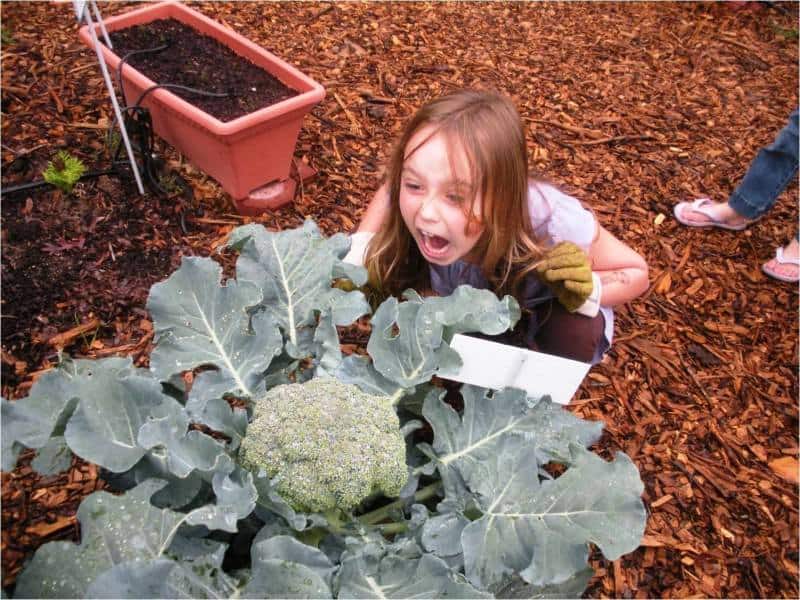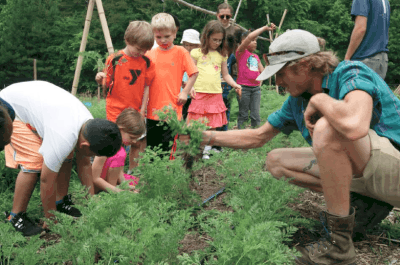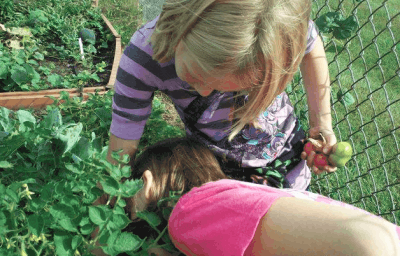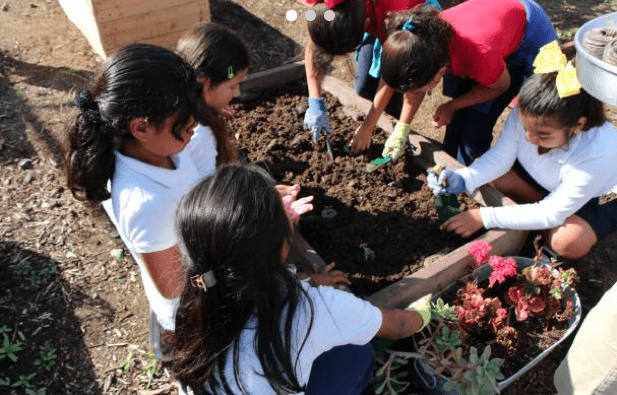Megan Lewis wanted to see kids get more hands-on when it came to school science curriculums.
Rather than sticking a potato in a cup of water and watching it sprout, Lewis, a first-grade teacher at Willow Springs Elementary School in Willow Springs, figured there was a better, more experiential way to teach kids.


So Lewis set about turning a patch of grass behind the school into a fully working garden. She applied for grants to buy seeds, soil, and containers. She pitched her idea to local farmers, who provided advice, and sought donations from local businesses.
The Grow Zone garden club was born.
Normally, Lewis’ efforts would be enough to get any garden project off the ground. As it turned out, Willow Springs administrators liked the idea and applauded Lewis’ efforts. But they wanted more.
If all Willow Springs students were going to be exposed to the garden, Lewis would require a more comprehensive plan for integrating the garden club into the school curriculum.
Similarly, Lacy Elementary School (in Raleigh) parent volunteer Martha Cecka helped start a school garden club with the support of the principal, who wants a county-approved plan to help the project grow and be sustainable.
A learning project for teachers
Like at Willow Springs and Lacy, the seeds for school garden clubs have been planted in the minds of teachers and parents across the state. The projects, however, still have hurdles to overcome if they are going to be successful.
“In terms of getting something off the ground, it often takes more work and people power than one person alone can do,” explained Sara Merz, president of the nonprofit Advocates for Health in Action, which advocates for healthy eating and physical activity in Wake County. AHA has about seven registered school gardens in the county.
Willow Springs has conquered the biggest challenges, with county-approved classroom lessons.
Lewis spent time researching, using websites like the Future Farmers of America and the California School Garden Network to guide her in the creation of more than 60 science lessons that correlate with county-required science curriculum.
Nonetheless, not all students and teachers work in the garden. The club has about 100 student volunteers.
“Although the Grow Zone is regularly utilized by the garden club, the biggest hurdle has been getting teachers to utilize the garden with their classrooms,” Lewis said.
According to Lewis, teachers are overwhelmed with regular classroom instruction, so taking kids to the garden for science class becomes difficult. To encourage teachers’ classroom participation, she recruited several teachers who like to garden. She’s quick to point out that she’s not trying to create extra work for her fellow teachers.
“These lessons are not meant to add to the work that teachers and students would be doing; rather, they would replace artificial classroom lessons with real-world garden connections,” she said. “I also created these lessons to assist [other] passionate garden teachers with getting their administrators on board.”
But if an edible garden project is going to grow beyond student-club status at any school, it needs not only formal classroom plans but outside funding sources.
Funding
“The dream was to create an outdoor learning environment where the garden and [related] activities are fully integrated into the school curriculum,” said Cecka, who continues to push for formal inclusion in school plans.


Parent volunteers at Lacy Elementary’s garden club have very little funding and little garden-teacher interaction for their project, now going into its fifth year. Guided by parents, the kids create fundraisers to offset the cost of supplies. By the end of the 2013-14 school year, the kids raised $400 selling homemade pasta and pesto kits.
A local restaurant donated the pasta, another business donated the bags and another provided the olive oil. The kids grew the basil and wrote cooking instructions on index cards.
Lewis has also applied for and received grant money from local sponsors like Lowes and Walmart.
Proving the garden’s worth
But school gardens have one more big hurdle to overcome to prove their full worth: documenting an impact on child health.
“I haven’t lost faith,” Cecka said.
Parents, teachers, and public-garden advocates eager to improve child health see edible school gardens as a tool to lower rates of obesity and diabetes and improve kids’ interest in eating fresh fruits and vegetables.
“Measuring the impact has been a little tricky,” Lewis said. She said that though there’s no hard evidence to prove it, she believes standardized end-of-grade science test scores have improved since starting the garden in 2008.
“The majority of our data is qualitative in the form of student, parent [and] teacher comments and testimony,” she said. “I personally have repeatedly seen students make connections to what they are learning from their work in the garden.”
“I have also seen their gardening knowledge transfer to their home, as they are now gardening there as well.”
The same goes for Cecka and the students at Lacy Elementary, as well as the other six school gardens registered in North Carolina. But they have no proven way of tracking and measuring improvements.
There is, however, a body of research indicating a connection between improved child health and edible school gardens. Much of the work has been documented in California, pioneers of the school-garden concept.


A 2007 study found that after 12 weeks, kids had increased levels of vitamin A and C and greater fiber intake. That same year, another study suggested eating fresh fruits and vegetables from the school garden showed potential to reduce the overweight-, obesity-, and diet-related diseases in young kids.
Research is ongoing, trying to promote, among other goals, healthier eating habits in youth enrolled in high-poverty schools through hands-on learning around what they grow.
The People’s Garden School Pilot Project aims to engage more than 4,000 elementary students to create vegetable and fruit gardens in 54 low-income schools in four pilot states (New York, Washington, Iowa, and Arkansas), as part of a two-and-a-half-year study.
Like its secondary-education counterparts in North Carolina, Durham Public Schools’ Hub Farm is struggling to produce the metrics that add credibility to sustain it for the long haul.
A collaboration with UNC-Chapel Hill is in the works that farm managers hope will generate results that help explain the impact, said Katherine Gill, Hub Farm’s project manager.
“We want to document things like, ‘Are we impacting reading or math scores?’ for example. It’s not just about helping kids identify fruits and vegetables,” said Gill, who was at AHA’s recent DigIn workshop, where public-garden advocates came together to address challenges and share opportunities to grow the network.
Unlike other school gardens, Hub Farm is rooted across all DPS’ curriculums and supported by community volunteers, as well as NC State University. The 30-acre farm – nestled between an elementary, middle, and high school and a public library – has space to grow and harvest food and wooded hiking and biking trails. Staff has raised money for operations via a Kickstarter campaign.
The project allows students of all ages to get involved in every aspect of the local food system. It also introduces them to farming as a possible career choice.
This story originally appeared in North Carolina Health News and is shared by EdNC through a content-sharing agreement with nonprofit news organizations in North Carolina.





